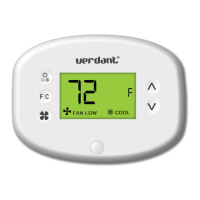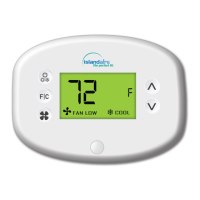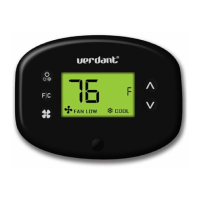What to do if Verdant VX is not controlling the PTAC unit?
- AandersonjeffreyJul 28, 2025
If your Verdant Thermostat isn't controlling the PTAC unit, check the red light on the Wireless Control Card. If the light is off, the control card isn't getting power, so verify that the Wireless Control Card is properly wired to the PTAC unit. If the red light is blinking once, the Wireless Control Card is powered but not connected to the thermostat; in this case, turn the thermostat off and on to re-initiate the linking procedure. If the red light blinks three times, the Wireless Control Card is connected to the thermostat, so check the wireless control card wiring and the thermostat configuration.






